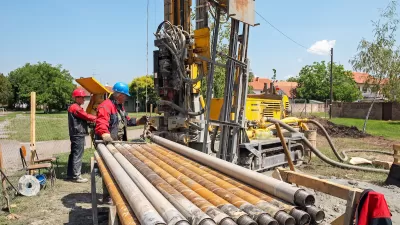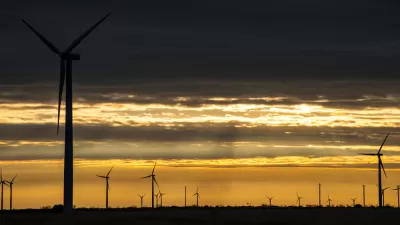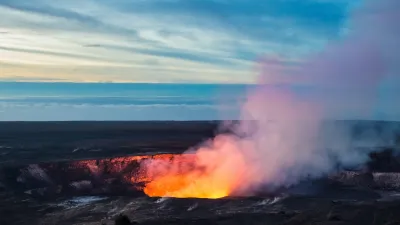Thermal energy networks can build grid resilience, provide a stable source of energy, and offer continued employment to utility workers skilled in traditional energy infrastructure.

Geothermal energy networks will soon become more available in the United States, writes June Kim in Technology Review. “In Framingham, Massachusetts, work has started on the country’s first geothermal network pilot project. Eversource, the utility company in charge, says it has completed 70% of the pipe installation and is on track to finish the project in November.” Meanwhile, New York was the first state to mandate thermal energy network projects from its largest utilities in 2022, and other states are moving forward with similar legislation.
According to Kim, “The advantages of thermal energy networks extend beyond reducing carbon emissions. Scaling them up from a few buildings to a community or utility level can also help make the grid more resilient and efficient.” This is in part because thermal energy, often acquired from waste heat, provides a more stable energy source than other renewables.
Geothermal energy networks are also attractive to unions because, unlike wind or solar installations with new and different technologies and equipment, they “rely heavily on underground piping systems, presenting an opportunity for workers with expertise in maintaining natural gas pipes to transition seamlessly into roles on those kinds of projects.”
FULL STORY: Underground thermal energy networks are becoming crucial to the US’s energy future

Study: Maui’s Plan to Convert Vacation Rentals to Long-Term Housing Could Cause Nearly $1 Billion Economic Loss
The plan would reduce visitor accommodation by 25,% resulting in 1,900 jobs lost.

North Texas Transit Leaders Tout Benefits of TOD for Growing Region
At a summit focused on transit-oriented development, policymakers discussed how North Texas’ expanded light rail system can serve as a tool for economic growth.

Why Should We Subsidize Public Transportation?
Many public transit agencies face financial stress due to rising costs, declining fare revenue, and declining subsidies. Transit advocates must provide a strong business case for increasing public transit funding.

How to Make US Trains Faster
Changes to boarding platforms and a switch to electric trains could improve U.S. passenger rail service without the added cost of high-speed rail.

Columbia’s Revitalized ‘Loop’ Is a Hub for Local Entrepreneurs
A focus on small businesses is helping a commercial corridor in Columbia, Missouri thrive.

Invasive Insect Threatens Minnesota’s Ash Forests
The Emerald Ash Borer is a rapidly spreading invasive pest threatening Minnesota’s ash trees, and homeowners are encouraged to plant diverse replacement species, avoid moving ash firewood, and monitor for signs of infestation.
Urban Design for Planners 1: Software Tools
This six-course series explores essential urban design concepts using open source software and equips planners with the tools they need to participate fully in the urban design process.
Planning for Universal Design
Learn the tools for implementing Universal Design in planning regulations.
City of Santa Clarita
Ascent Environmental
Institute for Housing and Urban Development Studies (IHS)
City of Grandview
Harvard GSD Executive Education
Toledo-Lucas County Plan Commissions
Salt Lake City
NYU Wagner Graduate School of Public Service





























